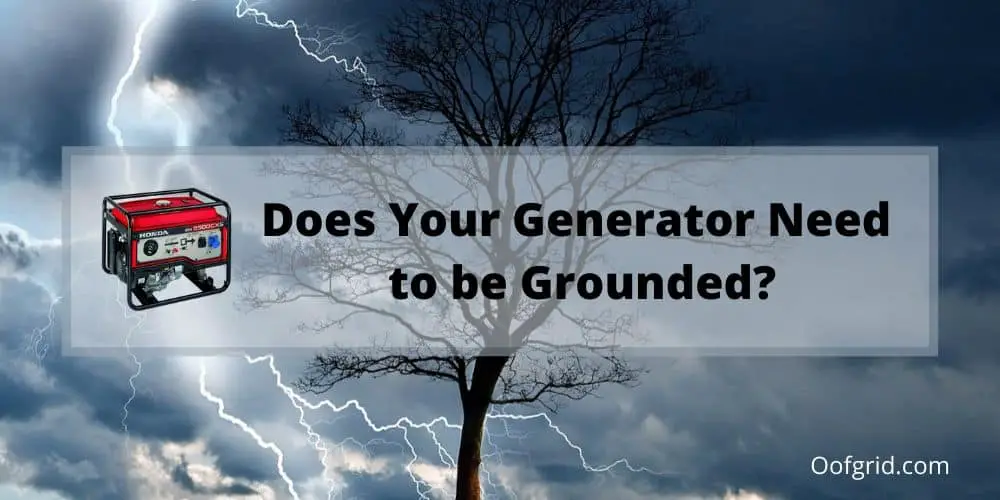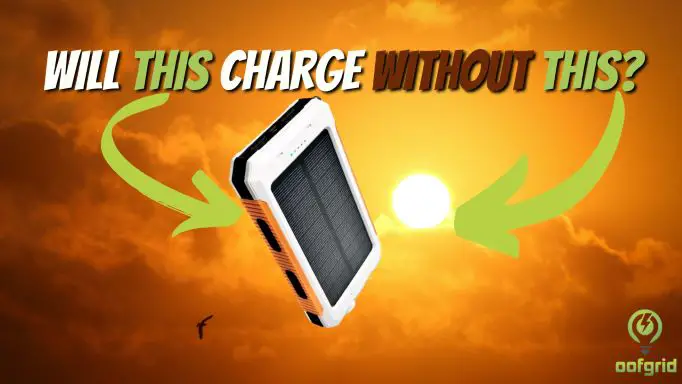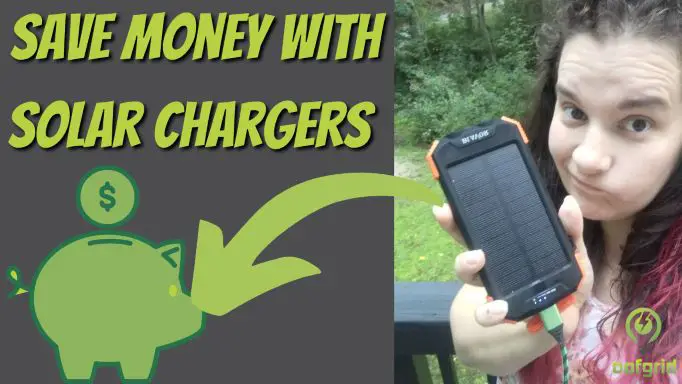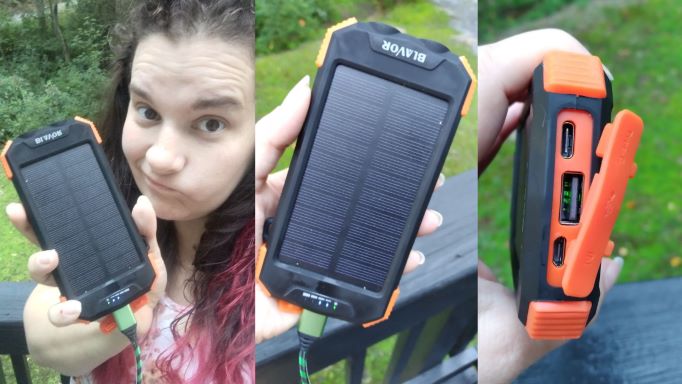Electrical currents take the path of least resistance to ground. This is why lightning tends to hit trees and metal poles instead of striking the ground. Unfortunately, the same process is at work when there is an arc flash from an electric generator, and the discharge can be as dangerous as lightning.
The solution is to ground your generator using ground rods that are very similar to lightning rods. But how do you know when your generator needs to be grounded? And what should you do if it does?
Does my generator need grounding? Each model and type of portable generator will have its own grounding requirements. Most general portable generators do not need grounding. However, heavy-duty and construction generators and older generators will need grounding.
Let us take a closer look at Generator grounding in more detail.

Contents [show]
Does My Generator Need to be Grounded?
The answer to this question depends on how the generator is built and how you are using it. For example, many portable generators don’t require grounding.
Yet there are heavy-duty portable generators that require grounding just like the older generators that required grounding to be used safely. Older generators of all sizes need to be grounded.
How Do You Know If Your Generator Needs To Be Grounded?
The simplest way to know if the generator needs to be grounded is to read the instruction manual. If they refer to it as a “separately derived system”, it needs to be grounded with a grounding rod. If it isn’t called a separately derived system, it probably doesn’t need to be grounded.
What if you’re missing the user manual?
Look at the transfer switch on the generator. If it cannot be transferred to a neutral ground conductor, it doesn’t need to be grounded or earthed.
This is called an unseparated derived system. This means the grounding or earth connection is already in place because the engine is bonded to the metal frame. Note that this means you’ll want the generator to sit on dry ground.
Disclaimer: Always seek proffesional advice from your generators manufacturer before using. Oofgrid.com do not accept responsibility for any safety issues regarding the setup and opperation of your generator.
Do Inverter Generators Need to be Grounded?
Inverter generators are generators. They’re typically grounded via the frame, though you’ll want to make sure the frame itself is grounded.
This grounding is essential whether the generator is running or you’re just pulling power that’s stored in the inverter. These are among the quietest generators on the market, though you can find a wide selection here in our complete generator guide.
What if you have an inverter without a generator?
Most inverters such as those found in power stations have integrated grounding and arc fault protection. However, you’ll need to take the same precautions with inverters and batteries as you do other energy storage devices, but this will not include a ground rod.
Instead, you’ll have to make sure it doesn’t get over-charged or overheat. Invest in surge protectors to protect them from power surges that may come from lightning strikes or variations in renewable energy sources like solar panels.

How to Ground a Portable Generator?
If the generator has a driven ground rod, grounding the generator may be as simple as shoving the rod into the earth once you’ve made sure the ground wire is wrapped around the grounding bolt on the generator.
Just make sure the generator is connected to the grounding electrical system. If the wire that connects the rod to the generator is frayed or breaks, your generator isn’t grounded anymore.
- LARGE CURVED cutting blade
- 12-14 Sol AWG single conductor stripping holes
- 6-32 & 8-32 screw shearing holes
- DOUBLE DIPPED spring loaded handles
Last update on 2025-06-16 / Affiliate links / Images from Amazon Product Advertising API
If the copper wire isn’t securely wrapped around the grounding bolt, the grounding system may not have a good enough connection to draw away the arc flash.
Connect the other end of the wire to a copper grounding rod and push it into the earth. The grounding rod should be at least four feet long.
The copper ground rod should be pushed into the earth at least eight feet from the generator. After all, you want the electricity to flow far away from the generator. You’ll want to push the rod several feet into the ground. The deeper the rod, the better the grounding.
The ground rod is typically hammered into the ground. If the ground is hard, you can use water to make the soil softer.
However, you don’t want the grounding rod to sit in water. The rod can be at an angle, but it shouldn’t be more than 45 degrees. Leave at least one to two feet above ground to ensure you can connect the ground wire to it as well as pull the ground rod back out of the ground.
Read Our Complete Guide on the best Budget Portable Power Generators 2020 here!
Quick Recap: How to ground a generator
- Hammer the copper grounding rod into the ground. Ensuring the rod is 8ft away from your generator and 4 ft deep into the ground.
- Strip and attach the copper wire to the grounding rod and make sure it is attached securely.
- Now that you have completed stripping and connecting the copper wire to the grounding rod it’s time to connect it to your generator. Strip the other end of the wire that is already attached to your grounding rod and attach it to the Grounding Bolt located somewhere on your generator ( See your instruction manual for location ) Wrap the stripped wire around the connector and secure tightly.

What Can You Do If You Don’t Have Ground Wire?
A generator that requires grounding should come with the appropriate wire and a ground rod. However, wires can fray, break or get lost.
In theory, any shielded copper wire can serve as a ground wire. You will have to strip both ends of the wire to expose the copper wire. That wire will be wrapped around the ground rod and the grounding bolt on the generator.
Can You Ground a Generator without Connecting It to the Earth?
There are a few occasions where you can ground a generator without literally connecting it to the ground.
For example, it may be possible to ground the generator by connecting it to the frame. However, this is only possible if the non-current carrying metal parts of the frame are bonded to the frame along with the grounding conductor terminals.
(Don’t use a generator that has missing grounding prongs or frayed cords.) Do not try to alter the generator’s frame so that you don’t have to ground it, if it requires a grounding rod.
Either use the grounding rod or buy a generator that doesn’t require one. You can find an affordable portable generator here.
Another option is to ground the generator by connecting it to the same ground rod that your electrical service is grounded to. The challenge here is finding that ground rod and connecting your generator to it. Yet this is a way to ground a portable generator if you’ve lost your ground rod.
What Happens If You Don’t Ground a Generator?
Proper grounding prevents shocks and, in a worst case scenario, electrocution. That means that failure to ground a generator that lacks built-in grounding via the frame is a threat to your family’s safety.
Uncommon current flow can also damage the equipment, even if no one is hurt. Furthermore, the uncommon current flow could feedback into your electrical system and short things out.
Now your failure to ground the generator has blown fuses or burned out the electrical equipment you were trying to power while the power grid was down.
Where possible always use a circuit breaker. Here is a good one we found on Amazon.
How Can You Test a Generator for Grounding?
Whether grounded or bonded, the circuit must provide a low resistance connection. Furthermore, the circuit must be able to conduct a surge of electrical current to ground and only to ground.
You can test this with a ground/neutral continuity tester. The tester will check the integrity of the ground and neutral connections for each receptacle on the portable generator to the frame or to the ground rod.
You should not use an ohm meter for the grounding system test when checking the grounding of ground rods, and it is a less than ideal test if the generator is grounded by the frame.
- Versatile Digital Multimeter - Accurately measures AC/DC Current, AC/DC Voltage, Capacitance, Frequency, Duty...
- Thoughtful Design - Support Data Hold, Large LCD Backlit Screen, Auto Shut-off and Kickstand make the process...
- Suitable For Many Occasions - This Multimeter is a golden partner to help to troubleshoot a variety of...
- Ensure Safety - Double ceramic fuse is anti-burn and protects from overloading, and it will be more secure and...
- Additional Tips - Please take off the cap before using the test leads. Check the manual for more usage...
Last update on 2025-06-16 / Affiliate links / Images from Amazon Product Advertising API
An ohm meter can tell you if there is an electrical connection, but it cannot tell you if the connection is a solid connection (as required for grounding) or a single strand of wire. And you can’t afford to take the risk of a surge of current hitting you because the bonding connection isn’t good enough.
What if the generator is grounded by the frame? You can run an ohmic resistance test to at least determine if the grounding is bad. It should be near zero every time you test it.
If the results are intermittent, there is a loose connection and you shouldn’t use the generator. However, a “good” result doesn’t mean it is safe to use.
What Else Can You Do to Stay Safe When Working with Portable Generators?
OSHA safety guidelines state that you should not attach a portable generator to the electrical system, whether it is your house or your RV, unless it has a correctly installed open-transition transfer switch.
Always use ground-fault circuit interrupters or GCCIs. Only use extension cords that contain a grounding conductor; these have 3-pronged cord connectors, while many indoor power cords have only 2 prongs.
Do not use unrated power cords, since they may not be able to handle the power flowing through them. For example, you should never use power cords that aren’t suitable for outdoor use when connecting to a generator, especially if it is sitting outside.
Take the time to inspect the generator before you use it. Proper grounding doesn’t eliminate other hazards associated with generators.
For example, even if it is properly grounded, you don’t want to run a gasoline or propane-powered generator if there is a fuel leak.
Is Bonding the Same Thing as Grounding?
You may have heard generators described as bonded and grounded. Cord and plug connected equipment like tools are considered to be separately derived systems.
Under the National Electrical Code, the neutral line of the item has to be bonded to the frame of the generator. Yet it may be connected to a portable generator that doesn’t have an electrical bond from the neutral to the generator.
These are called floating neutral generator applications, and most RV generators fall into this category. In these cases, you can earth a generator and everything plugged into it by having the frame bonded to earth ground.
That requires attaching a ground cable from the rod to the generator frame and bonding it to earth ground. Avoid touching the appliance when it is connected to a floating ground.
For example, if the RV has broken ground wires, you could get shocked when you touch the RV’s chassis. This is why you should try to earth a generator whenever possible, even if you think it is grounded. This is also why you can have a generator that is bonded by not grounded.
Conclusion: Does your generator need grounding?
Not all generators need to be grounded and again we advise you to check your instruction manual and follow their instructions. But knowing how and why to ground a portable generator can’t be a bad thing?
Correctly grounding a generator greatly reduces the risk of malfunction and keeps you and your generator safe.








